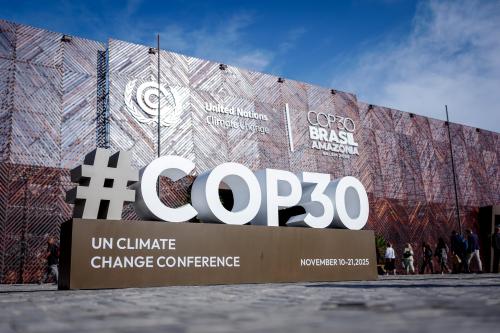A report recently released by the U.S. Government Accountability Office (GAO) offered recommendations for U.S. Arctic policy to the State Department—specifically on how best to enhance the United States’ 2015 chairmanship of the Arctic Council. This report, although informative on the large issue at hand, leaves much to the imagination as to how exactly the United States should go about exacting effective participation in the Arctic.
In the report, the GAO stresses that the State Department needs to track and follow through with its recommendations on Arctic policy. While these recommendations are a good start, clearer objectives are needed in order to capitalize on U.S. leadership in the Arctic going forward.
This past March, the Brookings Energy Security Initiative (ESI) released a policy brief for the State Department that addresses very specific Arctic issues that should be part of the United States’ agenda as Arctic Council chair in 2015.
Based on our analysis and conclusions, we in ESI believe that it is in the national interest of the United States to take the lead in strengthening the Arctic offshore oil and gas governance regime. The cornerstone of U.S. chairmanship should be enhancing oil spill prevention, control and response through the development of Arctic-specific standards for all equipment and resource sharing arrangements to ensure that adequate standards, procedures, financial resources, equipment and infrastructure are in place and available.
Our specific recommendations in our March policy brief are as follows:
- Establish oil spill prevention, control and response as the overarching theme for U.S. chairmanship of the Arctic Council in 2015-2017.
- Create the diplomatic post of “Arctic Ambassador.”
- Establish a Regional Bureau for Polar Affairs in the U.S. Department of State.
- Accelerate the ongoing development of Alaska-specific standards and discuss their applicability in bilateral and multilateral forums.
- Strengthen bilateral regulatory arrangements for the Chukchi Sea with Russia, and the Beaufort Sea with Canada.
- Support the industry-led establishment of an Arctic-specific resource sharing organization for oil spill response and safety.
- Support and prioritize the strengthening of the Arctic Council’s influence through enhanced thematic and global coordination of offshore oil and gas issues.
- Support the establishment of a circumpolar Arctic Regulators Association for Oil and Gas.
While we wish that the GAO’s report had outlined more specific recommendations, we applaud the increasing interest by the U.S. government in Arctic research. Last October, U.S. Secretary of Energy Ernest J. Moniz requested that the National Petroleum Council undertake a study on major energy issues in the Arctic that is currently underway. We hope that this and other reports will continue to reflect and reinforce the recommendations we have proposed.
The changing Arctic is outpacing the U.S. government’s current policy. Russia, Norway, Denmark and even several non-Arctic nations such as China and Japan, all have Arctic strategies. Perhaps it is time the U.S. viewed the Arctic not only as a security threat in a strictly military and geopolitical sense, but also as a safety threat in the context of climate change, sustainability of indigenous communities and the protection of the environment. Chairmanship of the Arctic Council in 2015 will allow the U.S. to take leadership in these important issue areas going forward, and we in ESI hope that the U.S. will seize this opportunity.
The Brookings Institution is committed to quality, independence, and impact.
We are supported by a diverse array of funders. In line with our values and policies, each Brookings publication represents the sole views of its author(s).




Commentary
The Way Forward for U.S. Arctic Policy
June 5, 2014